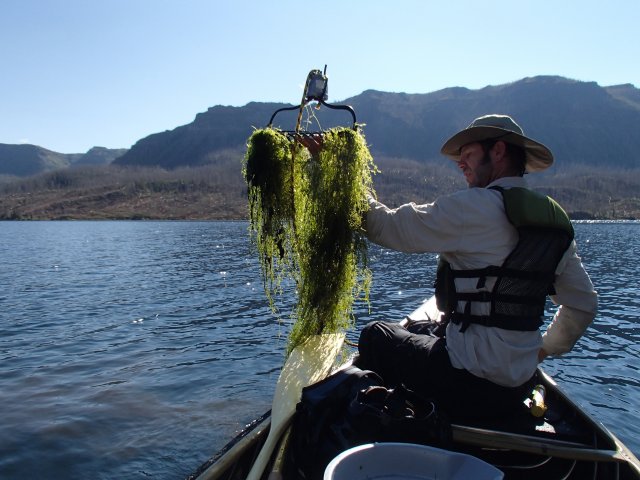Indicators: Macrophytes
What are macrophytes?
Macrophytes are aquatic plants growing in or near water. They may be either emergent (i.e., with upright portions above the water surface), submerged or floating. Examples of macrophytes include cattails, hydrilla, water hyacinth and duckweed.

Why is it important to evaluate macrophytes?
Macrophytes provide cover for fish and substrate for aquatic invertebrates. They also produce oxygen and provide food for some fish and other wildlife. Macrophytes respond to a wide variety of environmental conditions, are easily sampled, do not require laboratory analysis and are used for calculating simple abundance metrics.
What can macrophytes tell us about the condition of water?
The depth, density, diversity and types of macrophytes present in a system are indicators of waterbody health. Where submerged aquatic macrophytes are abundant, they can have a heavy influence on habitat structure, fishability, recreational use and nutrient dynamics. The absence of macrophytes may indicate water quality problem such as excessive turbidity, herbicides or salinization which interfere with plant growth and development. However, an overabundance of macrophytes can result from high nutrient levels and may affect ecosystem health, recreational activities and the aesthetic appeal of the system.
How is this indicator used in NARS?
The National Lakes Assessment collected macrophyte data in 2012. NARS data is available on the NARS data page.
| NLA | NRSA | NCCA | NWCA | Indicator Type |
|---|---|---|---|---|
| Core Indicator | ||||
| X | Research Indicator |
